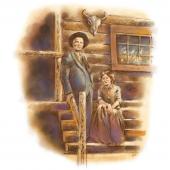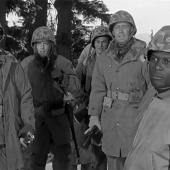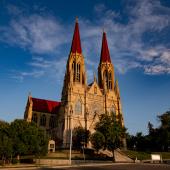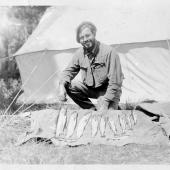A Day in the Life of John Emeigh, Reporter at KXLF in Butte

“I’ve been doing this for years,” Robert Duvall, as the crotchety editor Bernie White from the 1994 movie The Paper, bemoans. “Every day you still start from zero.”
In my many years as a reporter, that line, to me, is one of the most concise ways to describe working in daily journalism. Each day, whether you work in print or broadcast journalism, you are truly starting from zero. All the preparation aside—coming up with story ideas, setting up interviews in advance—each morning when I walk into the office I have a blank slate on which to tell a story about a part of my community. And, I must get it done that day.
I’ve worked for more than 20 years as a newspaper reporter, and the last seven years as a television news reporter for KXLF in Butte. It’s important to note that it takes a dedicated and talented team to put together the daily broadcasts. Each day we start from zero to produce what, at times, seems like a daily miracle.
6:00 AM
Wake up, coffee up and get in a workout. I try to get over a two-mile run, on the road or on the treadmill, each morning. The job can be both physically and mentally taxing, and exercise is a great way to fortify myself for the day.
Check all the other local news sources to make sure I didn’t miss anything important.
Shave, shower, dress. More coffee.
9:00 AM
Get to the office. Starting from zero. Check emails and messages. Scan the police log and arrest reports. Did anything crazy happen overnight? A shooting? A fire? Anything interesting? If so, write up a quick story and contact our digital editor to get it on the website ASAP. More coffee.
9:30 - 10:00 AM
Zoom meeting with news editor and other reporters to let them know what stories I’m working on that day. I cover Butte, Anaconda, Dillon, Deer Lodge and everything in between.
Did I mention more coffee?
10:00 AM - 3:00 PM
This is the hustle. The grind. Getting the job done. There really isn’t a typical day in the news business, but here’s an overview:
- Meet the people I’ve set up interviews with. I like to conduct interviews in the field. For example, if the story is about the Berkeley Pit, I’ll meet them at the pit. As a multimedia journalist, I’m the cameraman, sound engineer, interviewer—a one-man show. So, when I’m conducting an interview, I’ve got to make sure the camera and microphone are functioning properly, all this while asking pertinent questions and gathering good in - formation from the person I’m interviewing.
- Gather source material: court documents, city budget reports, archival records, anything to verify facts.
- Shoot B-roll—that’s fancy TV journalism talk for getting video. So, if I’m working on a story about Butte considering a new tax for street repairs, I’m going to go out and shoot streets and potholes around the city. I’ll also get comments from regular people (known of MOS or man-on-the-street interviews) to get their reaction to the proposed new tax.
- Sometimes breaking news occurs: a major highway crash or a house fire. Stop what I’m doing, race out to the scene, get video and interviews if possible. Because it’s the age of social media, I will likely do a Facebook live from the scene of a major incident. Since many people get their news online, we make it a priority to get as much news out on our digital platforms as possible.
- More coffee. (Remind self to later look into possible adverse health effects of drinking so much coffee, and then immediately forget about it.)
- Somewhere in there, I try to squeeze in lunch.
3:00 - 4:00 PM
Editing for the 5:30 show. Once I’ve scoured the town for news, interviews and video, I’m back at my desk putting together packages and VOSOTS. More fancy TV talk. Package - es are longer (usually a minute and a half) news stories, and a VOSOT is a shorter story with one comment that the news anchor reads. Editing is done on my computer. I pull out the best comments and video clips I shot and arrange them into a good story. I write the script and then record my narration over the story. Then I put all this in the “rundown,” so the control room and the anchors have it. (There’s plenty of techie stuff that goes on in this process that’s too boring to get into, so I’ll spare you the head-spinning details.)
5:30 PM - ON THE AIR!
Once everything is in (and it’s often at the last minute) it’s time to go live for the 5:30 broadcast behind the Butte anchor desk. This is the rewarding conclusion to a busy workday when I get to introduce the stories live on air that my fellow Butte reporters and I put together that day.
When the day is done, go home to my amazing family and feel grateful I get to live and work in the greatest town in the world—Butte, Montana.
Tomorrow, I’ll start from zero.












Leave a Comment Here